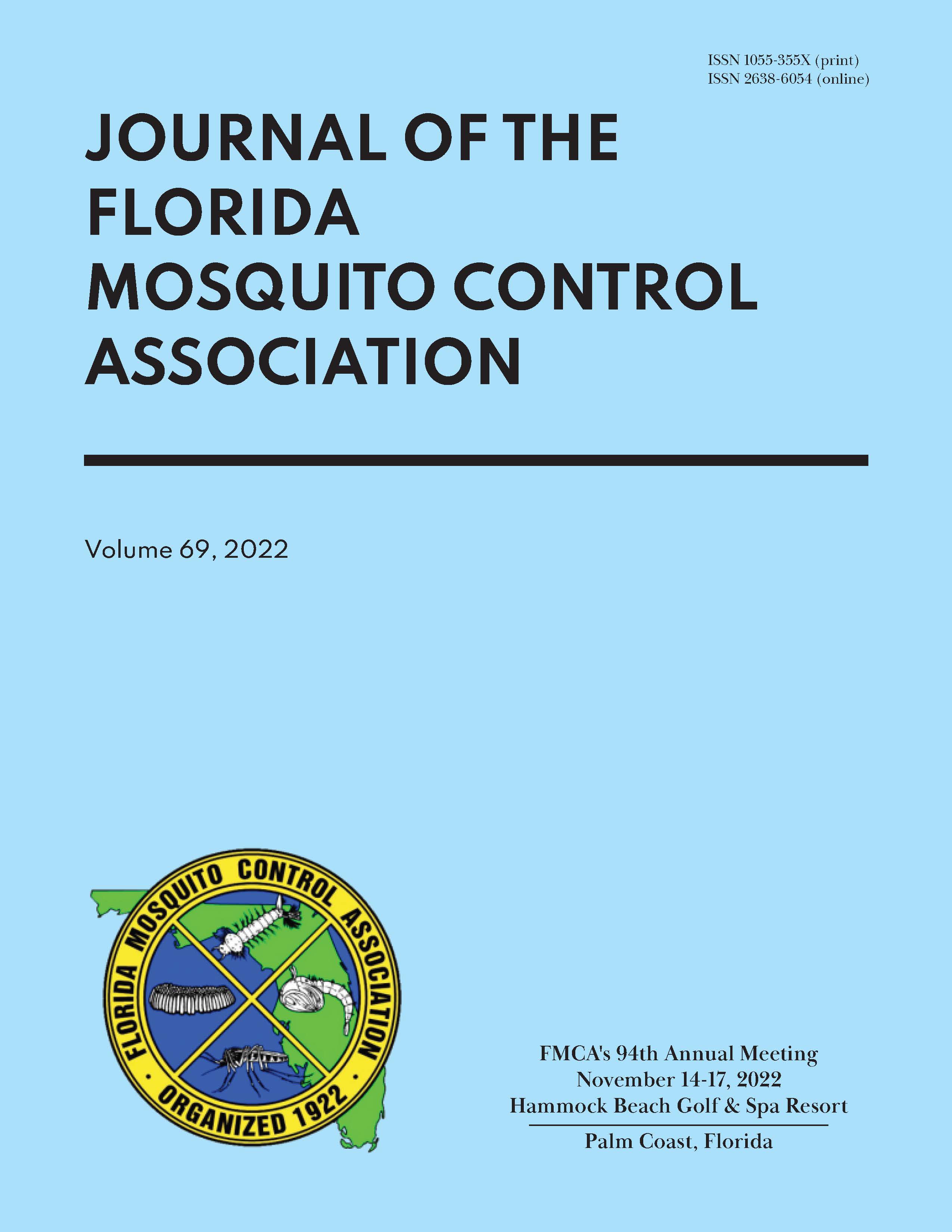RESIDUAL EFFECTS OF BIFENTHRIN SPRAYED ON PLANT FOLIAGES AGAINST AEDES ALBOPICTUS AND APIS MELLIFERA IN NORTH CENTRAL FLORIDA
DOI:
https://doi.org/10.32473/jfmca.v69i1.130638Keywords:
Aedes albopictus, Apis mellifera, bifenthrin, vegetation, barrier treatmentAbstract
A field study was conducted to test bifenthrin as a barrier treatment for its residual effects on adult mosquitoes Aedes albopictus and honey bees Apis mellifera in Gainesville, Florida. Plant foliage was treated with an American LongRay misting sprayer machine at the label rate of 0.318 mL/m². Treated plant leaves were then collected at 24 hr, one wk, and two wk post-treatment for laboratory bioassays against adult Ae. albopictus and A. mellifera. The mortalities of the mosquitoes and honeybees were significantly higher after exposures to the bifenthrin-treated plant leaves at 24 hr post-treatment, than the mortalities at one wk and two wk post-treatments. There were no significant differences in the mortalities of mosquitoes and honeybees exposed to treated plant leaves at one wk and two wk post-treatment. Also, the results showed that the treated plant leaves away from the spray path resulted in significantly high mortalities of both species at 24 hr post-treatment than the mortalities at 8 m and 11 m at one wk and two wk post-treatment. The commercial product of Talstar P (bifenthrin) sprayed on plant foliage resulted in significantly higher mortalities of mosquitoes and honeybees at 24 hr post-treatment at the 5 m distance. There was no significant residual efficacy of the product one week after post-treatment at any distance.


